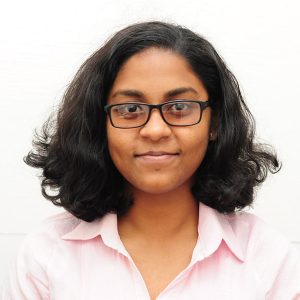WITH the COVID-19 pandemic continuing its disruption, vaccines appear to be the pharmaceutical intervention that would allow countries to return to some semblance of normalcy. Yet, equity, or at the very least, equality has been elusive in the global rollout of vaccines for the Sars-Cov-2 virus that causes the disease, COVID-19.
The COVAX facility was a global mechanism created to ensure that there is an equitable distribution of vaccines once they were made available. Yet, the larger economies of the world were able to engage manufacturers directly and stockpile vaccines for their citizens, some even able to secure enough vaccines to vaccinate their populations more than once. And this hoarding — or vaccine nationalism — meant that smaller, poorer countries, with limited purchasing or bargaining power, were left wanting.
Chairman of CARICOM, Prime Minister of Trinidad and Tobago Dr. Keith Rowley has consistently lamented this unequal distribution of vaccines, and his sentiments have been shared by World Health Organisation (WHO) Director-General Tedros Adhanom Ghebreyesus.
Guyana and many other countries of the Caribbean have received only relatively small quantities of vaccines through philanthropy thus far. Countries in this Region, like many developing countries, are confronted by the challenge of the unequal distribution of vaccines. This is not a case where countries can just sit tight and wait it out. So long as a significant portion of individual populations is not immunised against the virus, countries will not be able to get to that semblance of normalcy, lives will continue to be affected and economies will remain stymied.
Equity in the COVID-19 vaccination rollout is also a national conversation. Just as countries need vaccines to return to some normalcy, so too do communities in rural and outlying regions.
As per the vaccination schedules of the local health authorities, the frontline healthcare workers — who have placed themselves at a higher risk of contracting the novel coronavirus — have been receiving the vaccines first. Nowadays, elderly persons over the age of 60 are also being vaccinated as the second priority group.
Once more vaccines are acquired, vaccination will extend to other vulnerable groups such as other frontline workers, more elderly persons, and persons living with comorbidities (other underlying diseases such as diabetes). And there is sound, scientific reasoning guiding this vaccination schedule. Guyana does not yet have enough vaccines for all citizens, as yet. Even so, there are concerns that linger over the current distribution of the vaccines across Guyana.
If we are to zero in on Guyana’s largest region- Region Nine (Upper Takutu-Upper Essequibo), for example, there are only two health centres in that region where the vaccines are being distributed from the Lethem and Annai Health Centres. The concern that arises is that in this region, the vaccines are being distributed from only two points. Furthermore, both of these centres are located in the north and north-western areas of the region, which are hours away from other outlying communities.
Farther south, there are 21 indigenous communities located in the Wapichan territory. Interestingly, as reported by the Guyana Chronicle, the communities in the ‘Deep South’ have remained COVID-free. None of the health centres, or the hospital in Aishalton, have been storing vaccines as yet.
IT is important to note that the Ministry of Health announced that additional locations will be added as the vaccination rollout is expanded. The Guyana Chronicle, in its COVID-19 Supplement published on March 11, also reported that the Health Minister Dr. Frank Anthony has assured the public that upon the receipt of more vaccines, there will be a wider rollout.
The minister also noted that while some outlying areas may not have vaccination centres, vaccines will be taken into the communities through mobile ice-boxes. Through this system, some of the vaccines in the appropriate cold-chain storage at the identified health centres are placed into these carriers that contain dry-ice, allowing the vaccines to be stored and transported in about 24 hours. This allows a smaller quantity of vaccines to be distributed to the outlying villages.
This mechanism is in place throughout the regions. With this current system, however, there is a great possibility that many persons who are scheduled to receive their vaccines now, will not necessarily receive them. The ice-boxes are not conducive for longer-term storage and many of the health centres in the outlying regions may not be equipped with the requisite cold-storage capability to store the vaccines.
On both the national and international fronts, greater efforts need to be directed towards ensuring that there is equity in the rollout of these COVID-19 vaccines. Whether it is in the Caribbean Region or Region Nine, the vaccines must get to the people in need, so that all communities and regions can move beyond the stagnation imposed by this COVID-19 pandemic.
If you would like to discuss this column or any of my previous writings, please feel free to contact me via email: vish14ragobeer@gmail.com



.jpg)








